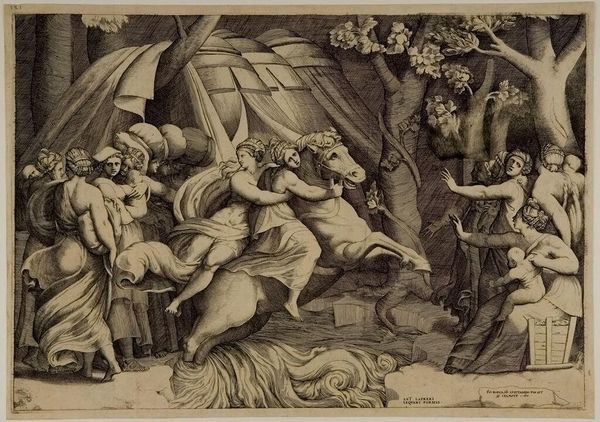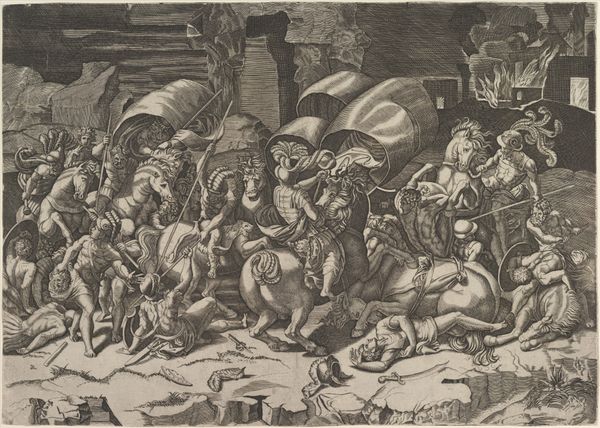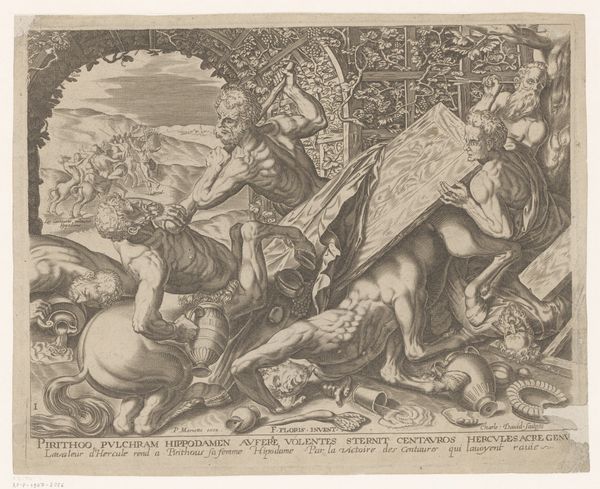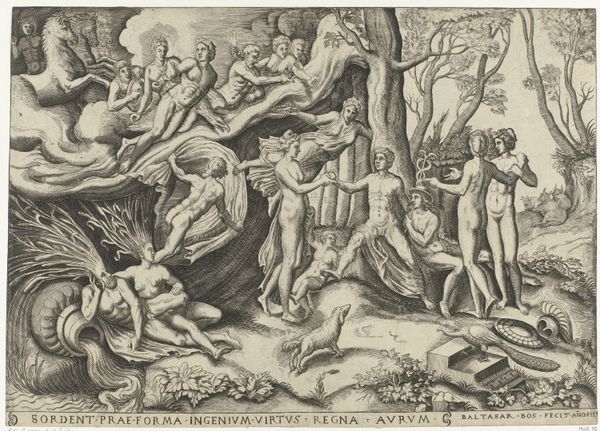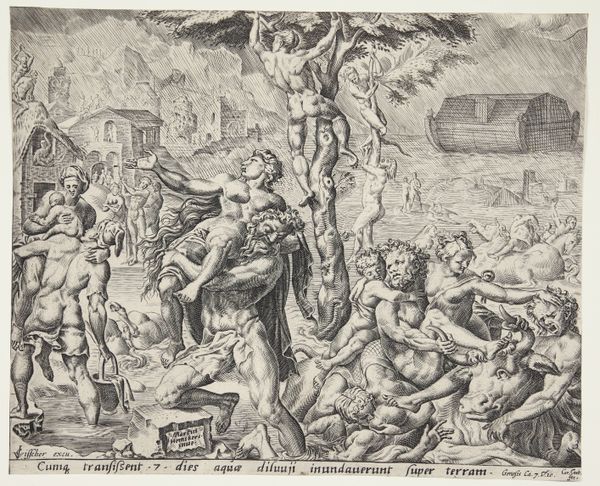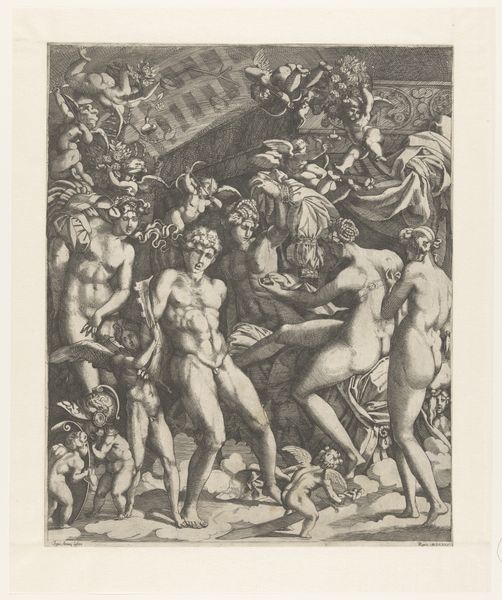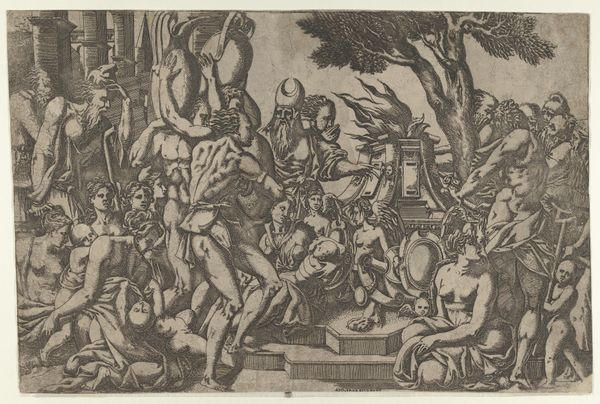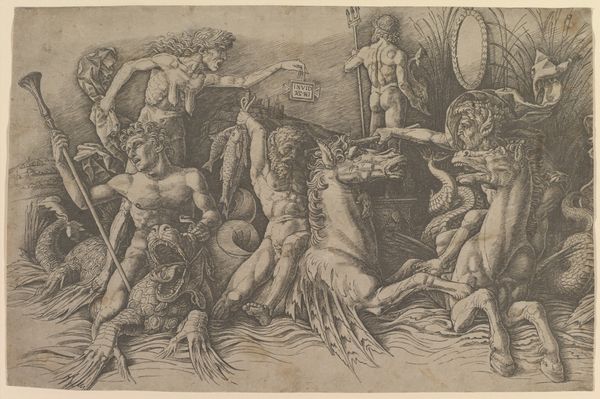
drawing, print, engraving
#
drawing
# print
#
landscape
#
figuration
#
11_renaissance
#
horse
#
history-painting
#
italian-renaissance
#
engraving
Copyright: Public Domain
Editor: We're looking at "Cloelia on Horseback Crossing the Tiber," an engraving made sometime between 1535 and 1545 by Giulio Bonasone. What strikes me first is the incredible movement, almost chaotic. The horse seems to leap right off the page! How do you interpret this work? Curator: Ah, yes, chaotic indeed! Like a vivid dream clinging to the edges of waking. To me, it feels like Bonasone has captured a moment of pure Roman bravado. He's not just showing us a historical event; he's breathing life into legend. Cloelia leading her fellow hostages to freedom, choosing daring over despair… don't you find that resonates even now? What does the landscape itself evoke for you? Editor: I hadn't thought of the landscape. It looks wild and untamed, a bit scary. Is it supposed to mirror the danger of their escape? Curator: Exactly! See how the trees claw at the sky, how the water churns? Bonasone’s really playing with our senses here, doesn't he? But look closer still. The details— the almost fussy attention to the horse's musculature and the folds in their garments—those whisper of a celebration of beauty, even in the midst of chaos. It’s as though he’s saying, “Yes, life is perilous, but isn’t it glorious?” Editor: So it’s not just about the history, but also the artistry, about finding beauty even in a dramatic scene? Curator: Precisely. He asks us to pause, to witness, and perhaps, just perhaps, to find the Cloelia within ourselves. Or perhaps not. That’s the beautiful cruelty of art; it holds the mirror up and asks *you*, finally, to see. Editor: I love the idea of looking for "the Cloelia within." Thanks for sharing your perspective. Curator: And thank you for asking such insightful questions. It’s these conversations that keep these old stories alive, isn't it? Like a relay race through the ages!
Comments
No comments
Be the first to comment and join the conversation on the ultimate creative platform.
